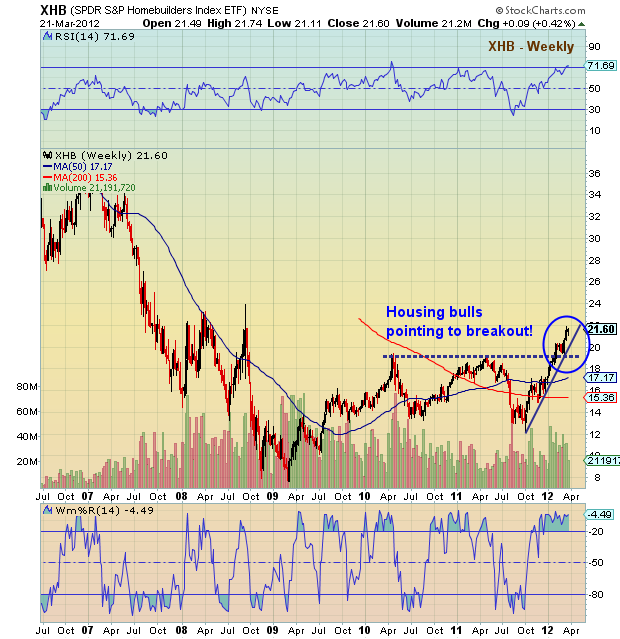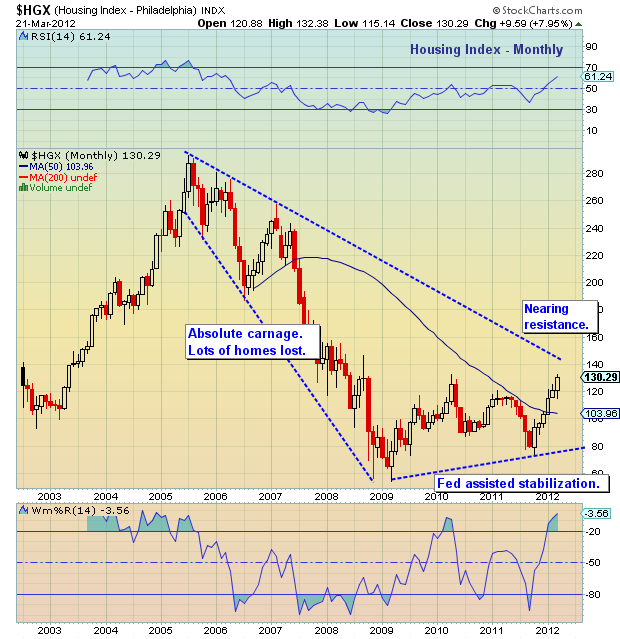 By Andrew Nyquist
By Andrew Nyquist
Housing began to show signs of cracking as early as 2005, and housing bears were taking notice. Problem was, the bears were in the minority and the stock market was still pedaling higher. The euphoria over cheap credit was muting out any and all valid concerns. “Housing was just correcting,” many thought. Simple as that. And simple is as simple does. But as time lingered on and knowledge about the “sub-prime” market began to hit the mainstream, the conversation changed. And fast. It was time for the bears to take center stage.
From late 2007 through much of 2011, housing bears dominated the conversation. Bulls couldn’t get a word in edgewise. And, as the data dragged lower, bulls simply moved to the sidelines. Even the slightest contrarian peep could risk their reputation. Bears seized on this opportunity and crushed their hopes and infiltrated their dreams. It was just plain ugly. And deserved. The industry had fallen hard and far from the tree. A role reversal of sorts.
It wasn’t until 2011 that housing bulls felt comfortable saying housing had “stabilized.” And even this fairly neutral term that doctor’s use when speaking about a patient, is still met by housing bears with rolled eyes. Heck, even I just rolled my eyes. The effects still linger and current sentiment leans bearish. So the contrarian side of me thinks this recovery phase may have a bit more gas in the tank than many think.
But that’s the short term view. And much of that view has been signed, sealed and delivered by the Fed. With love, mind you. Intervention and a submerge-and-hold strategy on interest rates has allowed the housing industry to “stabilize” for the time being. But similar to holding a ball under water, when it starts to move against you, it can move fast. And that is numero uno on the bears big scary argument list. But bulls are eager to counter that rising rates can also indicate an extended recovery… Say it isn’t so? Jokes aside, the long term outlook is hazy with a chance of witchcraft (sorry, can’t stop myself). Okay, so let’s look get to the arguments, both valid as we near a pivotal crossroads for one of the visible and integral pieces to our economy:
Bears:
1) Bond bubble bursts and long term rates turn higher.
2) Weak recovery (see Housing Index chart). So many folks have re-financed that there’s no incentive to move/trade up.
3) Emotional scars combined with higher credit and down payment requirements are pushing many out of the equation.
4) Investment funded multi-family units are leading the way and indicative of desire to rent, not own.
5) Recent data showed that the amount of homes for sale climbed to a 10 month high, likely indicative of a backlog of foreclosed properties hitting the market. Foreclosed and distressed properties have equated to roughly 35% of total demand.
Bulls:
 1) The psychological game has been reset, no where to go but up.
1) The psychological game has been reset, no where to go but up.
2) Supply slowly working off and low rates increasing appetite to own again — increase in jobs making it more affordable.
3) Homebuilders are seeing a mild uptick in activity as indicated by the recent rise in the S&P Homebuilders index (XHB).
4) Recent data showed the median home price increasing for the first time since November 2010.
5) Owners have to work hard to own a home again, which fits better with the “American Dream.”
Fragile as it may be, housing is nearing an important phase of the “recovery.” Will demand soak up excess supply and fuel a self-sustaining recovery? Or will the recovery fizzle out and beg for more QE? I have my doubts about the strength of the recovery, but regardless of my slant, I do understand this: time and price will be the final arbiters. When bubbles burst, markets need TIME to run the financial sickness through the system and PRICE discovery to create and move the marketplace forward. Right now fed intervention is masking both. To what degree, I don’t know. But I’m pretty sure we’ll have a better handle on housing when “QE” fades from our everyday life and into the history books.
———————————————————
Your comments and emails are welcome. Readers can contact me directly at andrew@seeitmarket.com.
Twitter: @andrewnyquist and @seeitmarket Facebook: See It Market
No positions in any of the securities mentioned at the time of publication.
Any opinions expressed herein are solely those of the author, and do not in any way represent the views or opinions of his employer or any other person or entity.









